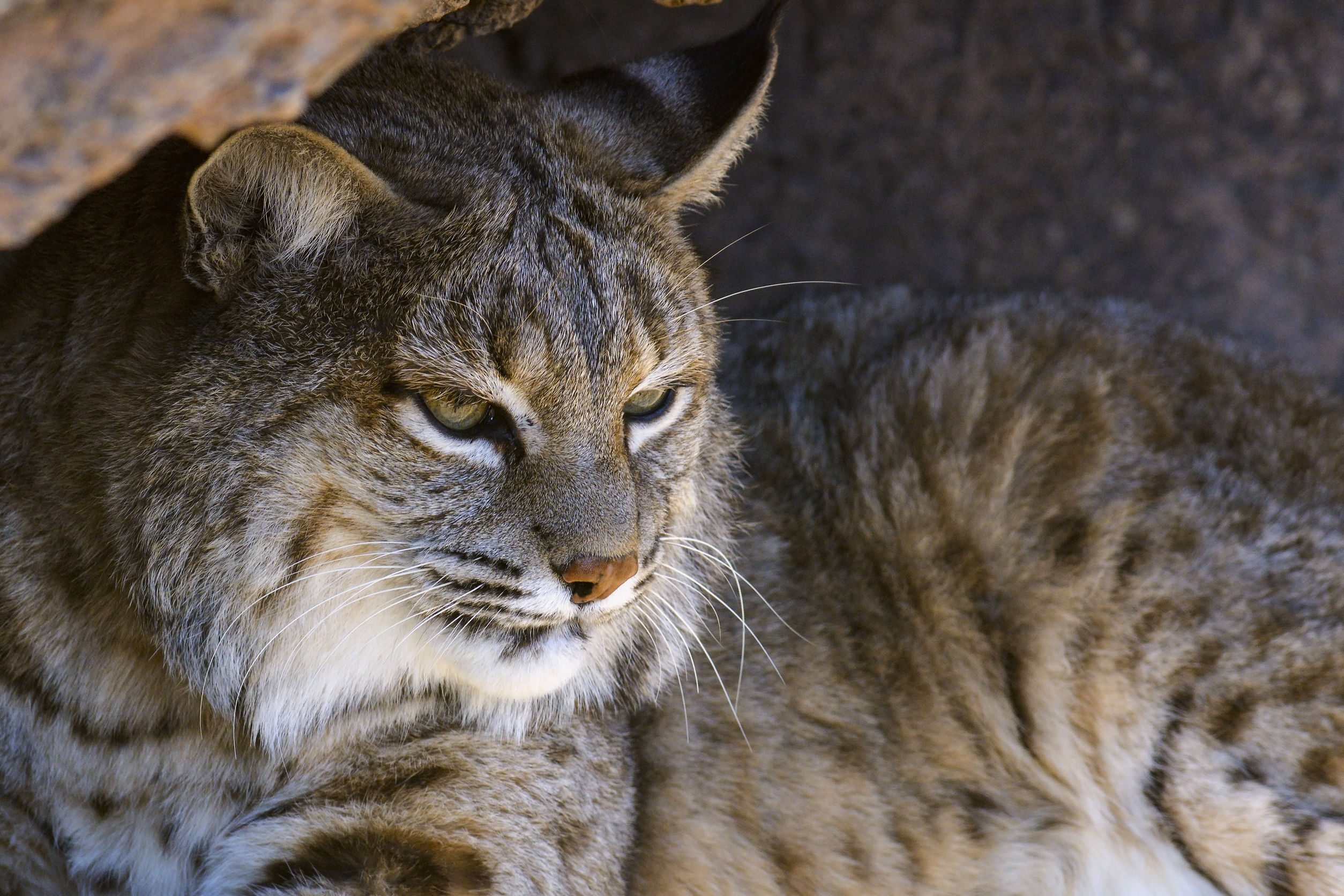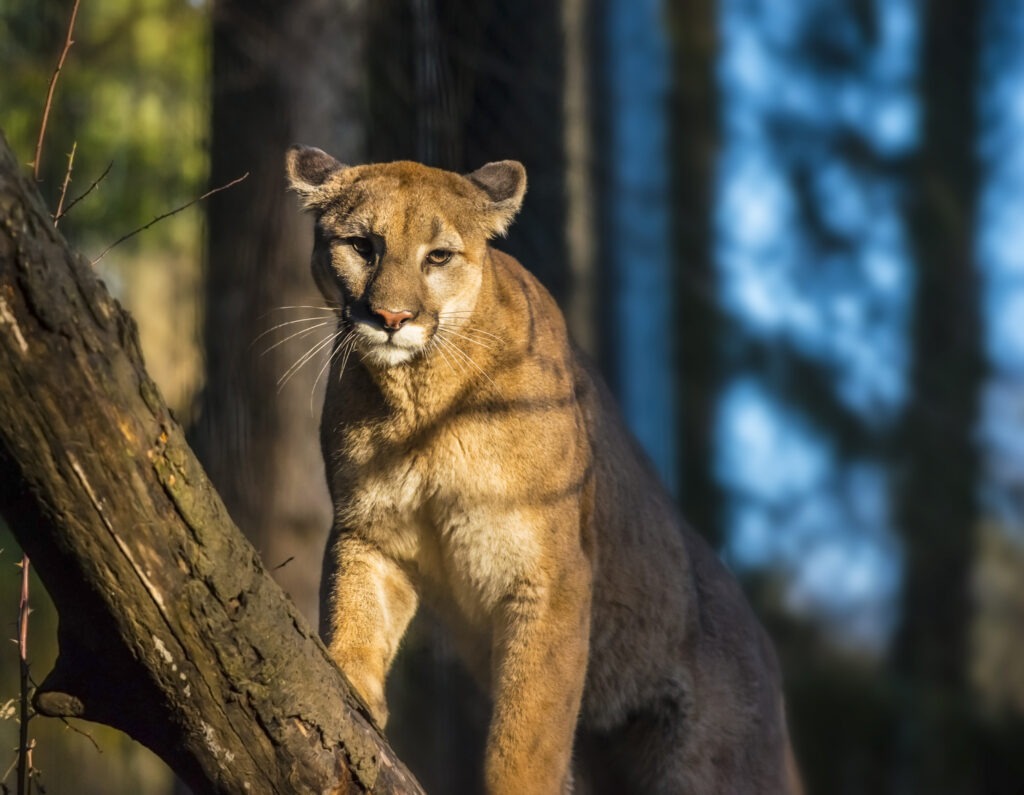
If you’re afraid of rattlesnakes, it’s probably pretty satisfying to see this deadly creature encounter something higher up in the food chain. While the rattlesnake is deadly to various creatures (including humans) there are a few animals that rattlesnakes are afraid of, such as bobcats. But do bobcats eat rattlesnakes?
Here’s what I’ve seen:
Bobcats do eat rattlesnakes, but they aren’t immune to the venom if bitten. But they avoid being bitten by timing their strikes and slapping the rattlesnake’s face downward.
Rattlesnakes also live in fear of foxes, cougars, coyotes, kingsnakes, and turkeys.
We’ll be discussing how a bobcat hunts down a rattlesnake and how a rattlesnake might defend itself. There will also be information on what other rattlesnake predators eat and how they deal with the deadly venom of a rattler.
Lastly, we’ll be going over some mammals that are immune to snake venom. There will also be interesting videos on how the rattlesnakes’ predators attack!
How do bobcats attack their prey?
The bobcat starts its hunt by either seeing the prey and sneaking up behind it or facing the snake in a head-on confrontation. If they choose to hunt with stealth, the bobcat can deliver a death blow by leaping over 10 feet for the attack.
These powerful jumps allow the bobcat to quickly close the distance between itself and the snake so that it can kill the snake before it even has a chance to strike back. Rattlesnakes rely heavily upon their own camouflage to hunt their prey and are very vulnerable if they are taken by surprise.
Bobcats have large, powerful paws, complete with a set of claws.
Anyone who has gone up against a housecat can tell you that a scratch from them is no joke. Imagine. how much worse it would be coming from a much larger, more muscular cat!
These large paws can easily swat a rattlesnake’s head to the side and are useful if the bobcat needs to pin it down for a final strike. They also have a powerful bite, which is the main weapon they use against snakes.
Once the snake has been disoriented and weakened by its slaps, the bobcat pounces and bites down on the snake’s neck. The snake can’t lash out from that angle and will either suffocate or be crushed to death.
How does a bobcat handle rattlesnake venom?
Although they may seem fearless when they attack these venomous snakes, bobcats actually have no natural defense against their poisonous bite!
If a rattlesnake was able to bite a bobcat and inject its poison, the bobcat would eventually die from it. However, it’s possible that it would still kill the snake before dying, so it’s a lose-lose scenario.
Despite having no immunity to their venom, the bobcat is still one of the main mammalian predators of the rattlesnake.
However, the bites received from a rattlesnake can still be deadly, or at least very painful for the bobcat, so the cat avoids them by slapping the rattlesnake’s head down.
This not only counters a rattlesnake’s attempt to bite the bobcat but also exposes the rattlesnake to a bite at the base of its skull.
If the first swat from the bobcat is insufficient to disable the rattlesnake, it will continue swiping until it has its opportunity. Finally, the bobcat is able to find a weak point in the snake’s attack and bites down on its head or neck, killing it within a few seconds. (Source).
How does the snake defend itself?
Rattlesnakes may not be able to win every time, but they’ll still put up a fight when a bobcat approaches them.
If they are able to sense the predator approaching, a rattlesnake will tighten its body up into an “s-like” coil, flatten its head to make its body patterns look dramatic, rattle its tail and hiss aggressively.
(However, it should be noted that rattlesnakes don’t always give their warning and can attack once it feels frightening.)
If the bobcat is particularly young or nervous, this threat display might be enough to make them back off. Only experienced hunters who are confident in their abilities will attack rattlesnakes, so this tactic sometimes works in the snake’s favor.
If the warning doesn’t work, the snake will lunge using half of its body length towards the predator.
With each strike, it will snap its fangs to penetrate the skin and attempt to inject venom. In some cases, the fangs might break off and remain buried in the skin of the predator.
Snakes can grow them back when this happens, but it won’t help them in a life-and-death scenario. Rattlesnakes will continue to strike until the predator backs off, or it dies. Source
Below is a video that shows a conflict between a rattlesnake and a bobcat.
You can see how quick the bobcat is and how easily it avoids the rattlesnake’s attack. Once the bobcat gets its jaws around the snake it’s all over. Bobcats win their fights by being quick, careful, and fearless.
How Do Predators Approach Rattlesnakes?
Bobcats are one of the most fearless predators when it comes to dealing with rattlesnakes.
They only have their fur and their quick reflexes to defend them, rather than any protective coverings or venom immunity. Foxes, coyotes, and cougars may also eat snakes, but they will usually only target them if other food sources are scarce. They have similar tactics compared to the bobcat, darting around and slapping the snake before killing it with a powerful bite.
Other predators have different tactics that they take to help keep themselves safe from the bites of a rattlesnake.
Black snakes, owls, eagles, hawks enjoy attacking and eating rattlesnakes as part of their main diet. Snakes are pretty much made of pure muscle after all, which is delicious and nutritious for predators.
These predatory birds will hunt by swooping down and carrying the helpless snake in their talons. Others will pin them to the ground and trample or peck them to death.
Once they’ve been taken into the sky, rattlesnakes are totally exposed and vulnerable. Even if they manage to slip free, they would fall to their deaths.
Bigger animals can be easily frightened of the rattlesnake’s rattle and hissing.
However, instead of running away, an animal like a bison, horse, or deer will often stomp on a rattlesnake to kill it. There are also people who ignore the danger of rattlesnake venom and risk hunting them for food or for sport. Many humans will also kill a rattlesnake out of fear if they see one.
How Are Rattlesnake Predators Immune To Viper Venom?
Many people believe that all rattlesnake predators, such as kingsnakes, are immune to the venom of other snakes but there’s a difference between immune and being resistant.
To resist something is to have the physiological ability to tolerate or counteract- in this case, it is applied to the kingsnake’s ability to counteract the effects of the toxin.
Biology resistance isn’t like “win or lose” as it is more about a gradient.
If there is a higher resistance, the result can be immunity where the toxin/disease will have no effect. Some animals can acquire resistance to the toxin by being exposed to lower doses so the immune system doesn’t see the toxin as foreign and dangerous to attack. For instance, this is how the kingsnake is able to be resistant. to rattlesnake venom.
Humans have used this principle to develop antivenom, which is used in the event of a snake attack. Most antivenoms are created using samples of the poison itself. Sometimes it is injected into an animal that has resistance and the antibodies are then extracted from the host.
If the memory from past attacks is stored and the body responds to the toxic substance the same way, it builds a quick tolerance for it.
Natural selection also does its job in making each species more and more resistant to venomous attacks, as the individuals that are more resistant to venom will be more likely to survive and reproduce.
However, the flipside of natural selection is that the snakes with more potent venom will also be more likely to survive and reproduce. This creates a kind of natural arms race of defense and attack strategies. Source
Some animals are truly immune to rattlesnake venom, but most predators just avoid being bitten altogether. At the end of the day, most animals will be safe as long as they avoid the fangs.
Other Predators Of Rattlesnakes
Bobcats are one of the top mammalian predators of the rattlesnake, despite their lack of venom immunity. However, there are many other animals who prey upon these snakes, including birds, mammals, and even other reptiles!
The other predators that the rattlesnake gravely fears are foxes, coyotes, cougars, possums, king snakes, and turkeys.
Similar to bobcats, foxes have little to no resistance to a rattlesnake’s venom. Because of the danger that rattlesnakes can pose to them, foxes try to end the fight quickly with a bite to the rattlesnake’s neck.
Foxes will commonly avoid fully grown rattlesnakes, however, and instead will hunt baby rattlesnakes- a much less dangerous prey to a fox because they are smaller and physically weaker. After finding where a young rattlesnake is hiding, the fox can dig it up and obtain an easy meal.
Coyotes are another hunter of rattlesnakes. Both foxes and coyotes are not as likely to attack a rattlesnake as a bobcat is, but they can still do a lot of damage to a nest of baby snakes.
Coyotes will generally avoid rattlesnakes because of the risk that the venom poses, but if food is scarce, they may turn to this reptilian prey.
Young rattlesnakes are especially vulnerable to predators of all kinds because their smaller size means that their bites reach a lot shorter distance. They also strike more slowly and have a lot less protection around their head and neck.
If the rattlesnake is especially young, it won’t have a rattle either, as rattlesnakes grow their rattles with each time that they shed. In order to protect themselves from coyotes, rattlesnakes will try to escape by slithering away from the coyote or down into a hole.
Unfortunately for them, coyotes are effective diggers and as such will almost always catch the fleeing rattlesnake.
If a coyote or fox gets bitten by a rattlesnake, they will suffer sometimes for days before either overcoming the venom or dying.
Cougars, however, can usually shake off the effects and recover after a few hours, if they are bitten at all. Luckily for rattlesnakes, cougars will usually only hunt them when they’re desperate since they prefer larger prey.

